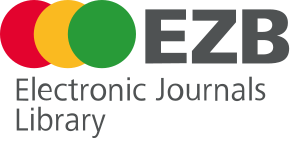Training competencies in dysmorphology: learning needs for professionals involved in clinical genetics
DOI:
https://doi.org/10.56294/shp2025166Keywords:
distance education, satisfaction, prevention, congenital defect, phenotypeAbstract
Introduction: Recent advances in molecular genetics and the use of artificial intelligence require professionals whose work is related to clinical genetics to have a basic knowledge of dysmorphology. It is therefore necessary to design a teaching strategy to improve their professional performance.
Objective: To identify learning needs in dysmorphology for professions related to clinical genetics.
Methods: A descriptive cross-sectional observational study was conducted on a non-probabilistic accidental sample of 80 professionals who attended the face-to-face conference “Dysmorphology: current challenges” and who were willing to respond to an anonymous printed questionnaire. Descriptive statistical methods were used to process the data.
Results: The average age of those who responded to the questionnaire was 46.83, the majority were female (92.5%), predominantly doctors (48.75%), with an average of 23 years of professional experience. Fifty-one point twenty-five percent were in teaching positions and fifty-two point five percent were scientists. Most attendees were satisfied with the conference, and the majority of proposals for postgraduate activities to be carried out during the course (sixty-three point three percent) included the use of technology for diagnosis (one hundred percent) and the use of nomenclature in dysmorphology (ninety-five point five percent).
Conclusion: The handling of nomenclature in semiology and the application of technology for diagnosis were identified as learning needs.
References
1. Solomon BD, Adam MP, Fong CT, Girisha KM, Hall JG, Hurst ACE, et al. Perspectives on the future of dysmorphology. Am J Med Genet A [Internet]. marzo de 2023 [citado 17 de febrero de 2024];191(3):659-71. Disponible en: https://doi.org/10.1002/ajmg.a.63060
2. Aase J. Diagnostic dismorphology. New Mexico: Plenium Publishing Press; 1990. 258 p.
3. Corona Rivera JR, Perez Molina Jj, Bobadilla Morales L, Barajas Barajas LO, Panduro Baron JG. Dismorfología. Introducción al estudio de las anomalías congénitas. Ediciones de la Noche. Guadalajara, Jalisco, Mexico; 2007. 203 p.
4. Basel D. Dysmorphology in a Genomic Era. Clinics in Perinatology [Internet]. 1 de marzo de 2020 [citado 17 de febrero de 2024];47(1):15-23. Disponible en: https://www.sciencedirect.com/science/article/pii/S0095510819301393
5. Battaglia A, Carey JC. Reflections on observing faces in art. American Journal of Medical Genetics Part C: Seminars in Medical Genetics [Internet]. 1 de junio de 2021 [citado 18 de agosto de 2021];187(2):144-7. Disponible en: https://doi.org/10.1002/ajmg.c.31912
6. Bhat M. The human face: genes, embryological development and dysmorphology. Int J Dev Biol [Internet]. 2020 [citado 17 de febrero de 2024];64(4-5-6):383-91. Disponible en: https://doi.org/10.1387/ijdb.190312mb
7. Morales-Peralta E, Álvarez FMA, Lardoeyt FR. Estrategia didáctica para incrementar el conocimiento del método clínico en genética. Salud CienciaTec [Internet]. 2022 [citado 17 de febrero de 2024];2(1). Disponible en: https://doi.org/10.56294/saludcyt202255
8. Ganske I, Khoshbin S, Katz JT. Teaching healthcare professionals to see. American Journal of Medical Genetics Part C: Seminars in Medical Genetics [Internet]. 1 de junio de 2021 [citado 18 de agosto de 2021];187(2):130-3. Disponible en: https://doi.org/10.1002/ajmg.c.31907
9. Ministerio de la Educación Superior (2019). Reglamento de la Educación de Posgrado de la República de Cuba. Resolución No. 140/2019. MES: La Habana, Cuba [Internet]. 2025 [citado 2 de junio de 2025]. Disponible en: https://www.gacetaoficial.gob.cu/sites/default/files/goc-2019-o65_0.pdf
10. Lardoeyt Ferrer R, Rubén Herrera Masó J. Índice de satisfacción de profesionales con la formación científica metodológica en una institución académica de Cuba. Rev Esp Edu Med [Internet]. 17 de abril de 2023 [citado 19 de febrero de 2024];4(1). Disponible en: https://revistas.um.es/edumed/article/view/559701
11. McKusick-Nathans Institute of Genetic Medicine, Johns Hopkins University (Baltimore, MD). Online Mendelian Inheritance in Man, OMIM® [Internet]. 6/2352023 [citado 22 de enero de 2025]. Disponible en: https://omim.org/
12. Pizarro Aguilar R. Los Equipos Interdisciplinarios. La necesidad del trabajo interdisciplinario en las instituciones de Seguridad Social en Costa Rica [Internet] [Tesis de Licenciatura en Trabajo Social]. [San Jose]: Universidad del Istmo de Guatemala; 1983 [citado 17 de junio de 2025]. Disponible en: http://www.binasss.sa.cr/bibliotecas/bhp/cupula/v8n17/art3.pdf
13. Salas Perea RS. La identificación de necesidades de aprendizaje. Educ Med Super [Internet]. 2003 [citado 16 de junio de 2025];17:25-38. Disponible en: http://scielo.sld.cu/scielo.php?script=sci_arttext&pid=S0864-21412003000100003&lng=es&nrm=iso>
14. Ministerio de Salud Pública de la República de Cuba, Dirección de Registros Médicos y Estadísticas de Salud. Anuario estadístico de salud [Internet]. 2024 [citado 16 de junio de 2025]. Disponible en: https://www.paho.org/sites/default/files/2025-02/anuario-estadistico-salud-2023-ed-2024.pdf
15. Gargano MA, Matentzoglu N, Coleman B, Addo-Lartey EB, Anagnostopoulos AV, Anderton J, et al. The Human Phenotype Ontology in 2024: phenotypes around the world. Nucleic Acids Research [Internet]. 11 de noviembre de 2023 [citado 22 de noviembre de 2023];gkad1005. Disponible en: https://doi.org/10.1093/nar/gkad1005
16. Biesecker L, Aase J, Clericuzio C, Gurrieri F, Temple I, Toriello H. Elements of morphology: Standard terminology for the hands and feet. Am J Med Genet A [Internet]. 2009 [citado 22 de enero de 2024];149A(1):93-127. Disponible en: https://doi.org/10.1002/ajmg.a.32596
17. Ministerio de educación superior. Manual de gestión de postgrado. INSTRUCCIÓN No. 01/2020.
18. Rojas Betancourt IA, Lantigua Cruz PA. Sistematización de experiencias sobre el asesoramiento genético en Cuba. Rev Cubana Salud Pública [Internet]. 22 de octubre de 2024 [citado 2 de junio de 2025];50(0). Disponible en: https://revsaludpublica.sld.cu/index.php/spu/article/view/15632
Published
Issue
Section
License
Copyright (c) 2025 Estela Morales Peralta, Damarys García Gomez, Daniel Quintana Hernández, Rosaralis Arrieta García, Miladys Orraca Castillo, Roberto Lardoeyt Ferrer (Author)

This work is licensed under a Creative Commons Attribution 4.0 International License.
The article is distributed under the Creative Commons Attribution 4.0 License. Unless otherwise stated, associated published material is distributed under the same licence.






